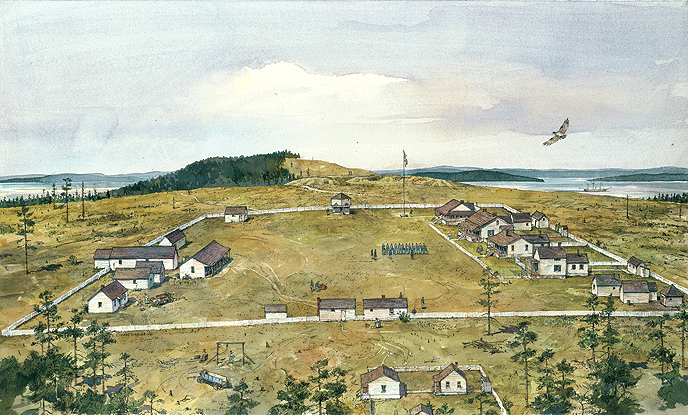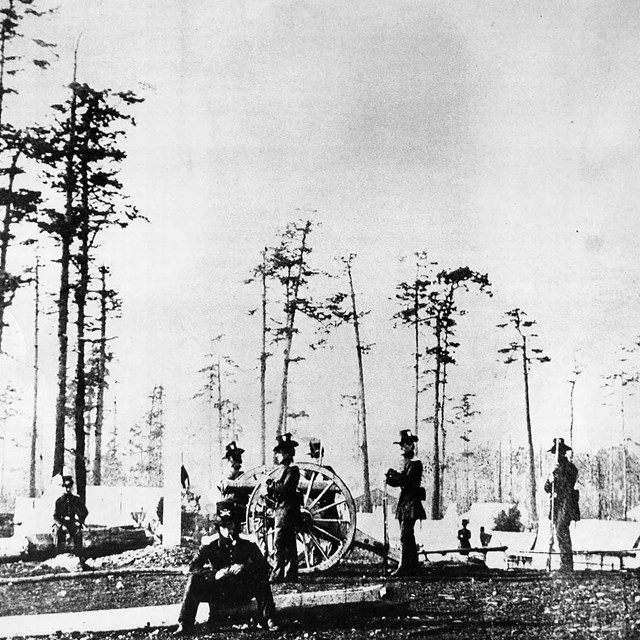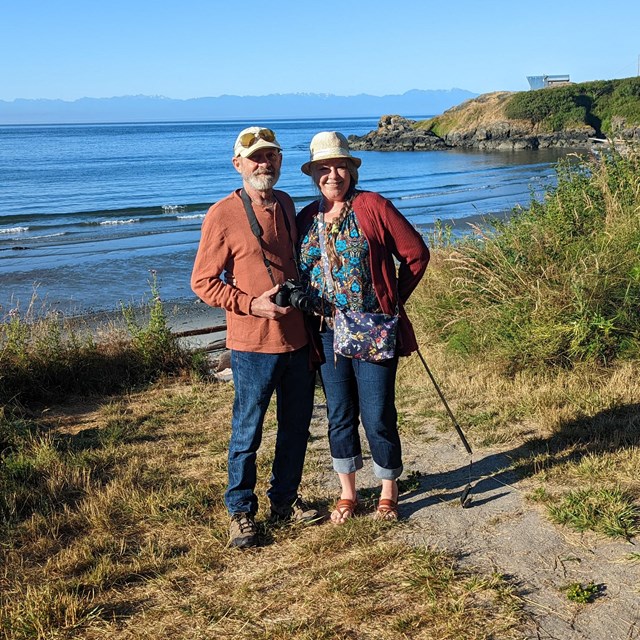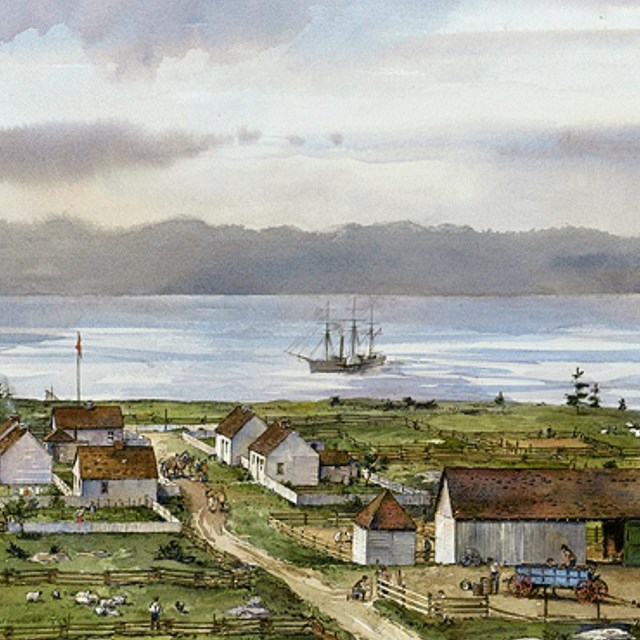
NPS Painting by Richard Schlecht When Great Britain and the United States in 1859 agreed to a joint occupation of San Juan Island until the water boundary between the two nations could be settled, it was decided that camps would be located on opposite ends of the island. Pickett changed locations five days later perhaps in a quest for level ground but more likely because of the British naval guns looking down his throat. It wasn’t until the August 10 arrival of reinforcements under command of Lt. Col. Silas Casey that the post found its permanent home. Casey had decided to move after spending two stormy nights at Pickett’s second camp. "We are encamped in rather exposed situation with regard to the wind, being at the entrance of the Straits of Fuca," Casey wrote. "The weather at times is already quite inclement." The veteran colonel also ordered Corps of Engineers 2nd Lt.Henry Martyn Robert — later to achieve fame for his Rules of Order — to start work on a earthen fortification on the ridgetop east of the new camp with a commanding view of both strait and bay. Meanwhile, the British riding at anchor in Griffin Bay were nothing short of impressed with the colonel’s enterprise. "(Casey's camp) is very strongly placed in the most commanding position at this end of the island, well sheltered in the rear and one side by the Forest and on the other side by a Commanding eminence," wrote Captain James Prevost, commander of the H.M.S. Satellite. As a deterrent, the post served its purpose until November when Lt. Gen. Winfield Scott and British Columbia Gov. James Douglas finally agreed to a peaceful joint occupation by a company from each nation until the boundary dispute could be resolved. Casey and the bulk of the troops departed, along with the artillery from the redoubt. One company remained.
|
Last updated: November 12, 2022



